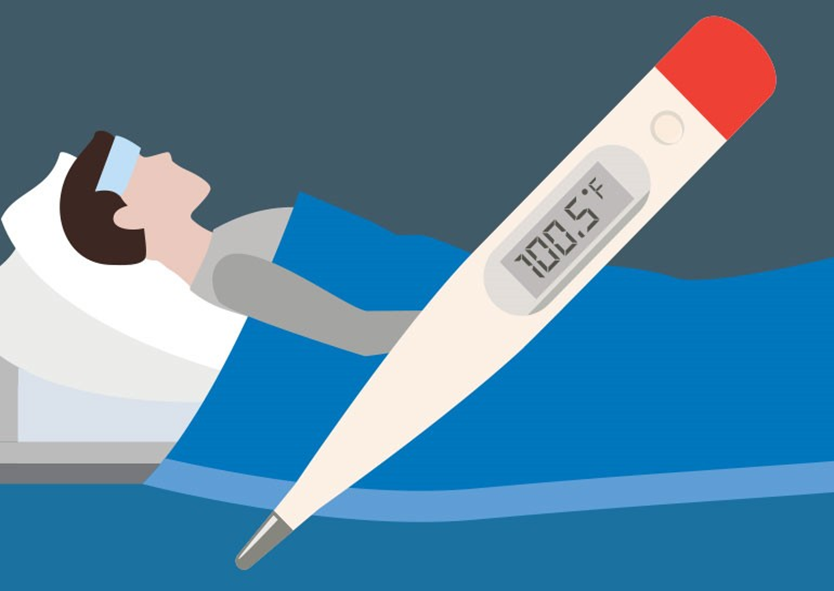The client tells the nurse, "I am about to have a seizure." Which of the actions should the nurse implement? (Select all that apply)
Loosen the patient's clothing
Ease the patient to the floor if standing
Restrain the patient
Protect the patient's mouth with a padded tongue blade
Provide privacy
Correct Answer : A,B,E
Choice A rationale:
Loosening the patient's clothing around the neck and chest promotes easier breathing during the seizure. It also prevents potential injury from constrictive clothing that could restrict movement or circulation.
Choice B rationale:
Easing the patient to the floor if they are standing helps to prevent falls and injuries that could occur due to loss of consciousness and muscle control during the seizure. It's crucial to guide the patient gently to the floor to avoid abrupt movements that could trigger or worsen the seizure.
Choice C rationale:
Restraining the patient during a seizure is not recommended as it can cause harm. Attempting to restrain a patient's movements during a seizure can lead to muscle strains, joint injuries, or even fractures. It can also increase anxiety and agitation, potentially prolonging the seizure.
Choice D rationale:
Protecting the patient's mouth with a padded tongue blade is not necessary and can even be dangerous. It was once a common practice, but it's now discouraged as it can cause oral injuries, obstruct the airway, or induce vomiting.
Choice E rationale:
Providing privacy helps to protect the patient's dignity and reduce any potential embarrassment during the seizure. It also creates a calmer and less stimulating environment, which can be beneficial in managing the seizure.
Nursing Test Bank
Naxlex Comprehensive Predictor Exams
Related Questions
Correct Answer is A
Explanation
Choice A rationale:
Fever is the most reliable early indicator of infection in a client with low WBC because it is a direct physiologic response to the presence of pathogens. When the body detects an infection, it releases pyrogens, which act on the hypothalamus to raise the body's temperature. This elevated temperature helps to create an environment that is less hospitable to bacteria and viruses, and it also stimulates the immune system to fight the infection.
In clients with low WBC, the immune system is already compromised, so the fever response may be even more pronounced. It's important to note that even a slight elevation in temperature (as low as 100.4°F or 38°C) can be significant in these clients.

Choice B rationale:
Chills can also be a sign of infection, but they are not as specific as fever. Chills can occur for other reasons, such as exposure to cold or anxiety.
Choice C rationale:
Tachycardia, or increased heart rate, can also be a sign of infection, but it is not as reliable as fever. Tachycardia can occur for other reasons, such as dehydration, pain, or anxiety.
Choice D rationale:
Dyspnea, or shortness of breath, is not a typical early sign of infection. It is more likely to occur in later stages of infection, when the infection has spread to the lungs.
Correct Answer is A
Explanation
Choice A rationale:
Coughing and deep breathing are essential for mobilizing and removing secretions from the airways, which is crucial for improving airway clearance in patients with pneumonia. These techniques help to loosen mucus and bring it up from the lungs, allowing it to be expelled through coughing.
Hydration maintenance is also critical because it helps to thin secretions, making them easier to cough up. Adequate hydration helps to keep mucus moist and less sticky, which promotes easier expectoration.
Choice B rationale:
Keeping the head of the bed elevated can help to improve oxygenation and reduce the work of breathing, but it does not directly address the issue of airway clearance. It may be a helpful adjunct intervention, but it's not the priority for this specific nursing diagnosis.
Choice C rationale:
Preparation for insertion of a tracheostomy tube is a more invasive intervention that may be necessary in severe cases of airway obstruction, but it is not the first-line intervention for ineffective airway clearance related to pneumonia. It would be considered if other measures fail to maintain adequate ventilation.
Choice D rationale:
Providing supplemental oxygen can help to improve oxygenation in patients with pneumonia, but it does not directly address the issue of airway clearance. It's important to support oxygenation, but it's not the primary intervention to clear secretions.
Whether you are a student looking to ace your exams or a practicing nurse seeking to enhance your expertise , our nursing education contents will empower you with the confidence and competence to make a difference in the lives of patients and become a respected leader in the healthcare field.
Visit Naxlex, invest in your future and unlock endless possibilities with our unparalleled nursing education contents today
Report Wrong Answer on the Current Question
Do you disagree with the answer? If yes, what is your expected answer? Explain.
Kindly be descriptive with the issue you are facing.
